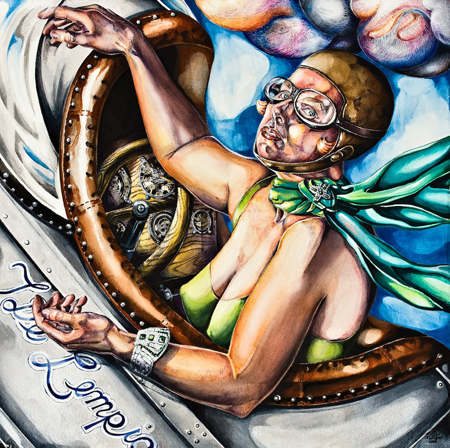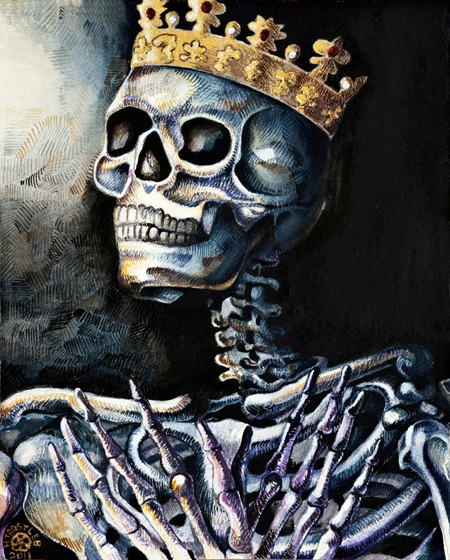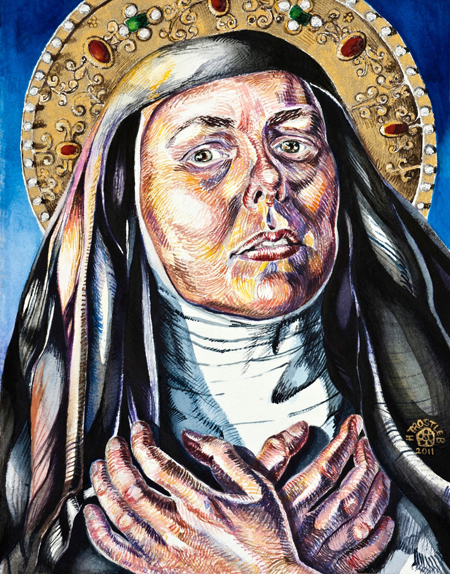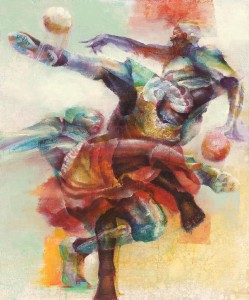A
butterfly is a symbolic creature within the context of art and nature. It is
admired for its beauty, fluidity, and evolution. A butterfly’s metamorphosis
serves as a powerful metaphor for how equally transcendent human life can be.
An old proverb continues to ruminate in our society, which expresses, “Just
when the caterpillar thought its life was over, it became a butterfly.” This very resonating idea simply and
thoughtfully addresses the balance between darkness and hope in human life. It
is within these themes that artists like Dosso Dossi, Damien Hirst, and Holly
Trostle Brigham explore and create artwork.
Butterflies
symbolically appear in early works by Italian painter Dosso Dossi during the
Renaissance. Specifically, in his piece Jupiter
Painting Butterflies, Mercury and Virtue, Dossi portrays the god Jupiter in
the act of painting butterflies. The godliness of Jupiter empowers his painted
creations to life and the butterflies are visibly beginning to emerge from his
canvas. These butterflies intermingle with the colors of the rainbow in the
background setting. The newly created souls that rest in the butterflies are
meant to enter the world of men. The figures of Mercury and Virtue are tensely
interacting in the scene as well. Mercury tries aimlessly to silence Virtue
before Jupiter is disturbed during his act of creation. Dossi employs a
didactic use of allusion to illustrate the complexity of these butterflies. Ultimately,
Dossi’s butterflies show the delicacy of life: it can easily be created and
taken away.
Dosso Dossi, Jupiter Painting Butterflies, Mercury and Virtue, 1524
Damien Hirst, I Am Become Death, Shatterer of Worlds, 2006
In
2006, an art piece emerged by artist Damien Hirst that elicited controversy and
commentary on the same human principles explored in Dossi’s work. Rather than
bringing butterflies to life like Jupiter, Hirst used the death of butterflies
to speak to ideas on regeneration and revival. The piece titled I Am Become Death, Shatterer of Worlds consisted
of thousands of dead butterfly wings, resting in red household gloss paint.
Hirst stated when reflecting on his work, “I’ve got an obsession with death …
But I think it’s like a celebration of life rather than something morbid.”[1] Hirst
intended to reference the spiritual nature of butterflies that was used by
Greeks to depict Psyche (soul) and Christian symbolism to signify resurrection
in his work.[2]
These elements are palpable throughout the piece as the viewer is confronted by
the complex nature of the wings’ natural beauty. This beauty is a product of
regeneration and metamorphosis that ultimately dissipates all over again. Thus,
life and death emerge from the piece sublimely.
Holly
Trostle Brigham, Freeing the Frieda in Me,
2003 (detail)
Butterflies
are thus a vehicle in which to visually understand the balance between
indefinable ideas. Yet, for artist and knowledgeable lepidopterist Holly
Trostle Brigham, butterflies hold a personal symbolism. Butterflies appear over
and over again in her Seven Sisters I
paintings including Frida Kahlo, Judith Leyster, and Maria Sibylla Merian.
Brigham chooses butterfly
species that help to convey the narrative surrounding her female protagonists. For
Brigham each butterfly symbolizes a specific idea and theme. Brigham’s most
personal image and self-portrait “Zephyr, Angel, Wings and Me” depicts herself
as a winged pilot evoking imagery of butterfly wings and Amelia Earhart.
Brigham gives herself the wings of a butterfly signifying her final assimilation
of the motif. The painting stands as a metaphor for Brigham’s aspirations for
physical, spiritual and intellectual fulfillment in life.[3]
Holly Trostle Brigham, Zephyr, Angel, Wings and Me, 2002
It
is no surprise that artists have gravitated toward the image of butterflies in
their work. These creatures hold such beauty and grace, while also representing
profound ideas. Additionally, simple adages like “Just when the caterpillar
thought its life was over, it became a butterfly” continue to ruminate
throughout society. Butterflies hold powerful meaning for viewers. Their
imagery has the ability to explain the inevitable: change. Whether that change
is in the form of life, death, or metamorphosis it can be understood through
the simple sight of a butterfly.
Zephyr, Angel, Wings and Me as well as the Seven Sisters series is currently on
display at the Luther W. Brady Gallery as a part of the Holly Trostle Brigham: Dis/Guise exhibit, which will be shown until
February 28th.



.jpg)












